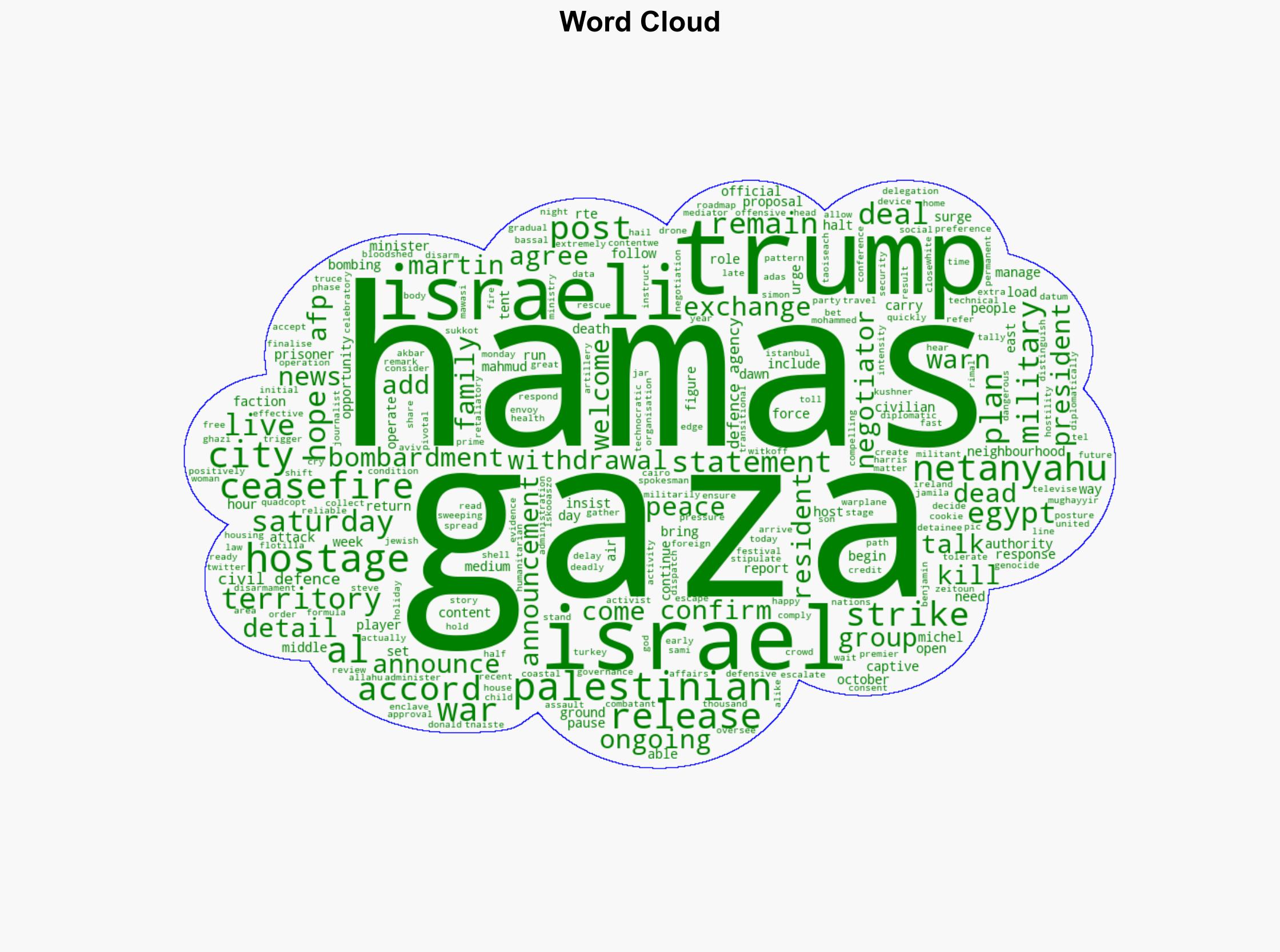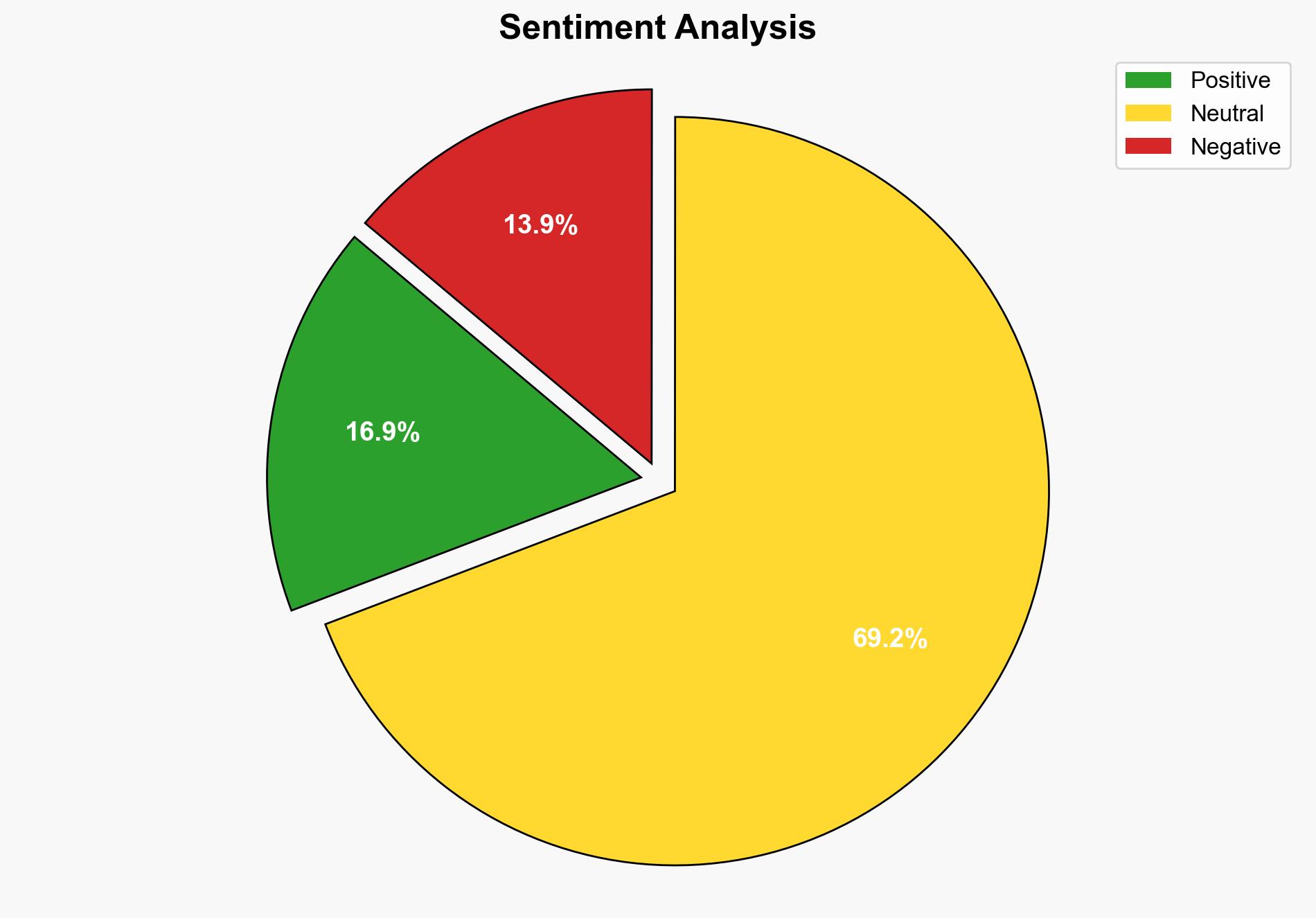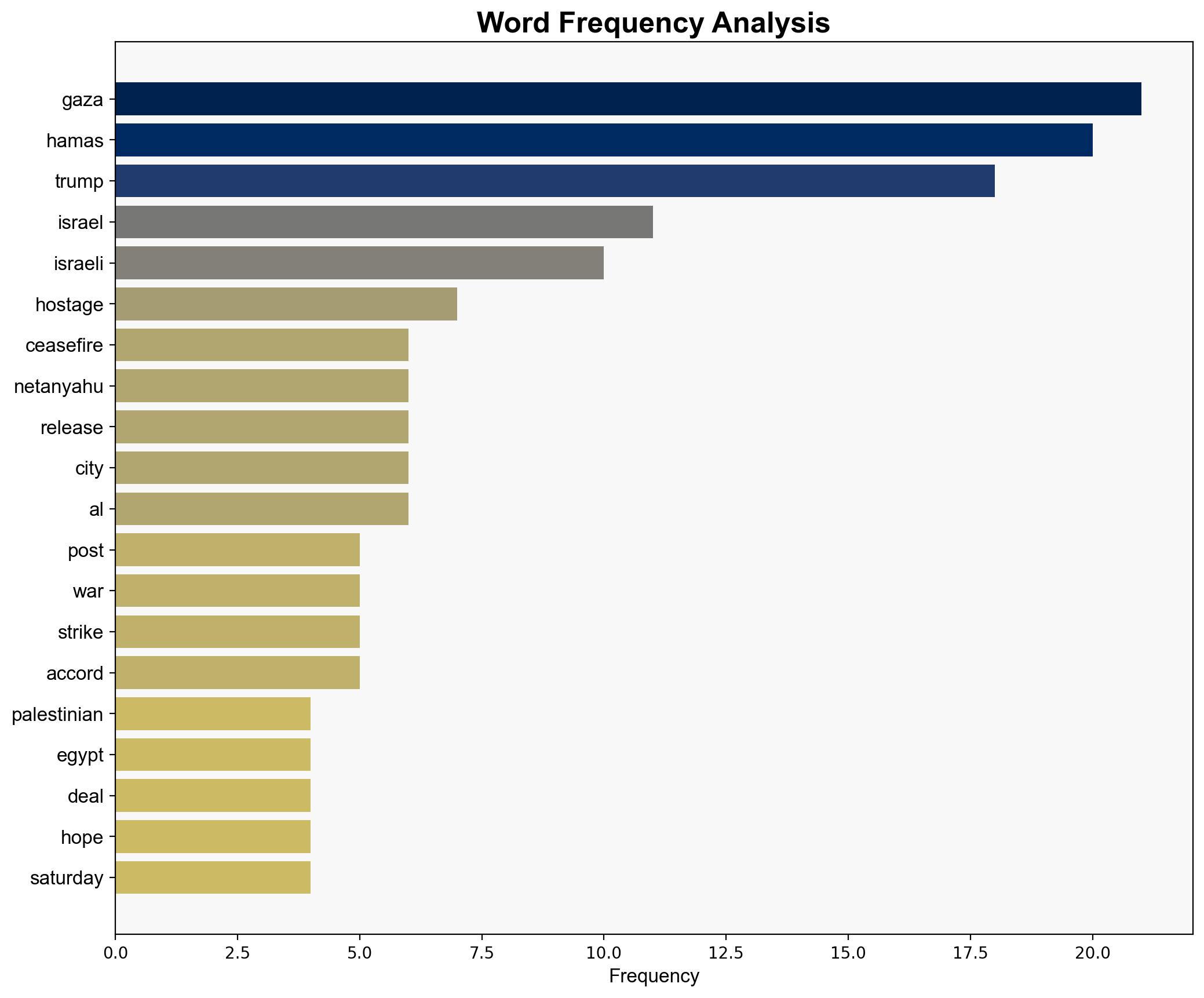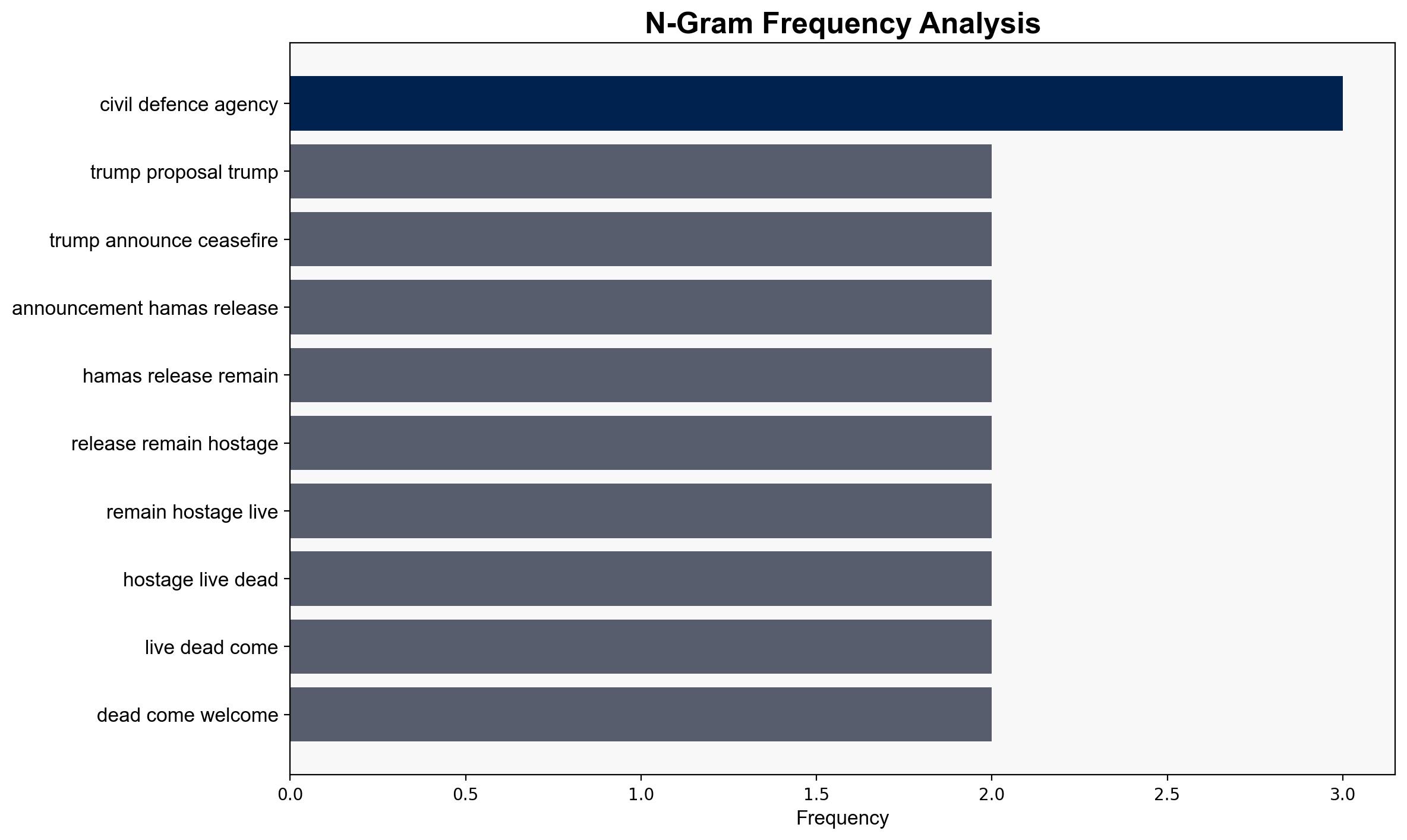US President says Hamas is ‘ready for peace’ – RTE
Published on: 2025-10-04
Intelligence Report: US President says Hamas is ‘ready for peace’ – RTE
1. BLUF (Bottom Line Up Front)
The most supported hypothesis is that the announcement of Hamas being “ready for peace” is a strategic move to gain international favor and reduce military pressure, rather than a genuine shift in ideology. Confidence level is moderate. Recommend cautious engagement with verification mechanisms to ensure compliance and prevent exploitation of the ceasefire for rearmament.
2. Competing Hypotheses
1. **Hamas is genuinely ready for peace**: This hypothesis suggests that Hamas’s announcement reflects a true willingness to engage in peace processes, potentially driven by internal pressures and the desire for stability in Gaza.
2. **Hamas is using the peace announcement as a strategic maneuver**: This hypothesis posits that Hamas aims to alleviate immediate military pressure and gain time to regroup, without a fundamental change in its long-term objectives.
Using the Analysis of Competing Hypotheses (ACH) 2.0, the second hypothesis is better supported due to historical patterns of behavior and the timing of the announcement amidst ongoing military actions.
3. Key Assumptions and Red Flags
– Assumption: Hamas’s leadership has unified control over its factions to enforce a ceasefire.
– Red Flag: Continued Israeli bombardment despite the announcement suggests skepticism about Hamas’s intentions.
– Potential Bias: Over-reliance on official statements without corroborative evidence from independent sources.
– Missing Data: Lack of detailed terms of the ceasefire and disarmament plans.
4. Implications and Strategic Risks
– **Geopolitical Risks**: A failed ceasefire could escalate tensions, drawing in regional actors and destabilizing the broader Middle East.
– **Psychological Impact**: Prolonged conflict may erode public trust in peace processes, complicating future negotiations.
– **Economic Consequences**: Continued instability could deter investment and humanitarian aid, worsening Gaza’s economic conditions.
5. Recommendations and Outlook
- Engage in multilateral talks with regional stakeholders to support a sustainable ceasefire.
- Implement monitoring mechanisms to verify compliance with ceasefire terms.
- Scenario Projections:
- Best Case: Successful ceasefire leads to long-term peace negotiations.
- Worst Case: Ceasefire collapses, leading to intensified conflict and regional instability.
- Most Likely: Temporary reduction in hostilities with potential for sporadic violence.
6. Key Individuals and Entities
– Donald Trump
– Benjamin Netanyahu
– Jared Kushner
– Steve Witkoff
– Mahmud Bassal
– Mohammed Al Mughayyir
– Mahmud Al Ghazi
7. Thematic Tags
national security threats, regional focus, counter-terrorism, geopolitical strategy




